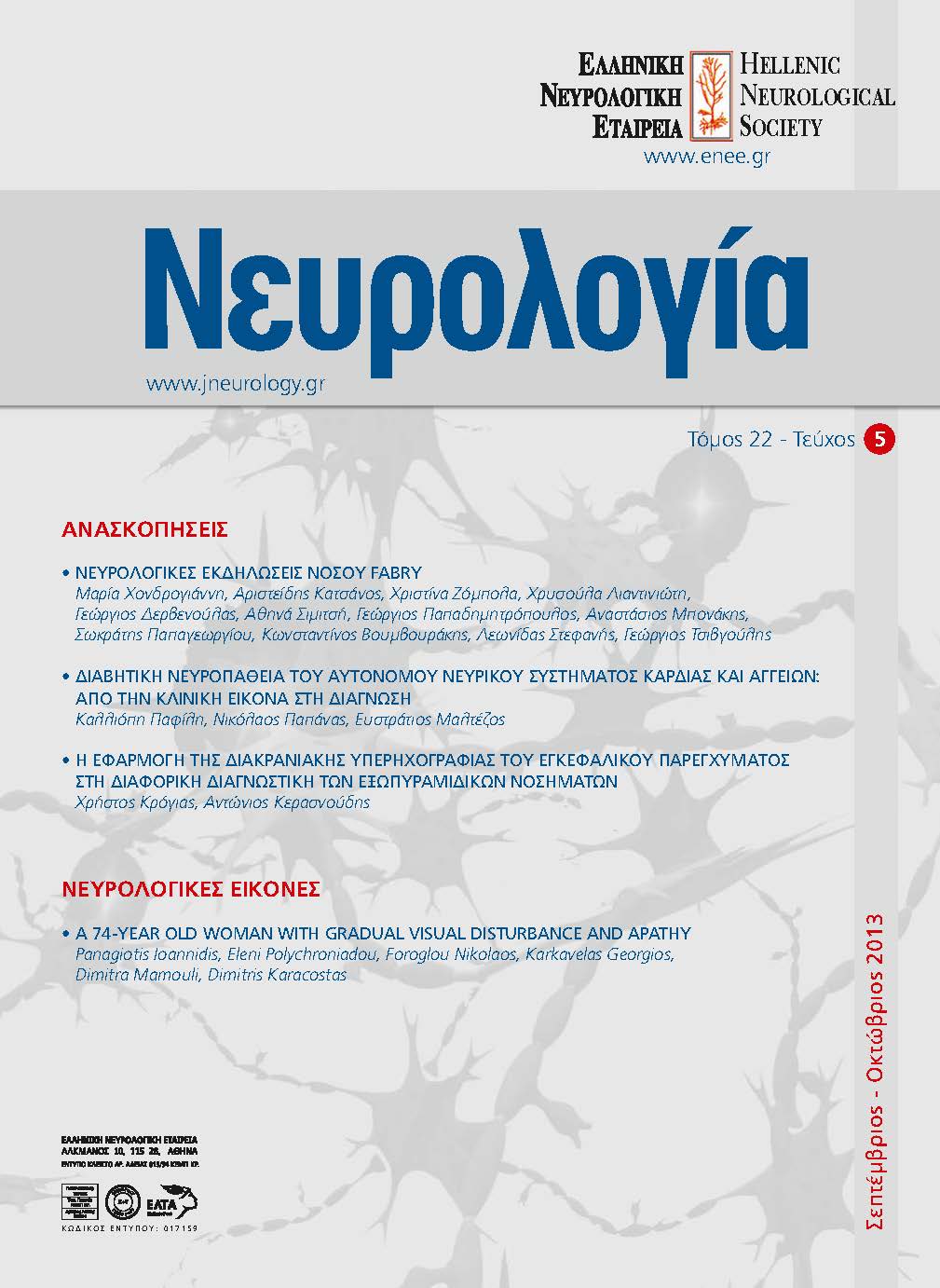∆ιαβητική νευροπάθεια του αυτονόµου νευρικού συστήµατος καρδιάς και αγγείων: από την κλινική εικόνα στη διάγνωση
Λέξεις-κλειδιά:
διάγνωση, σακχαρώδης διαβήτης, καρδιαγγειακό σύστηµα, νευροπάθεια του ΑΝΣΠερίληψη
Η νευροπάθεια του αυτόνοµου νευρικού συστήµατος της καρδιάς και των αγγείων (ΚΑΝ) µπορεί να αποτελεί πρώιµη επιπλοκή του σακχαρώδη διαβήτη (Σ∆) και συνδέεται µε αυξηµένη νοσηρότητα και θνησιµότητα. Σηµαντικότερος παράγοντας κινδύνου θεωρείται η υπεργλυκαιµία. Οι κυριότερες κλινικές εκδηλώσεις της
ΚΑΝ περιλαµβάνουν: την ταχυκαρδία σε ηρεµία, την ορθοστατική υπόταση και την αυξηµένη ευαισθησία της
στη χορήγηση κατεχολαµινών. Στα ευρήµατα ανήκουν η µειωµένη αντοχή στην άσκηση, η δυσλειτουργία
και υπερτροφία της αριστερής κοιλίας, το σιωπηλό έµφραγµα του µυοκαρδίου, η περιεγχειρητική καρδιαγγειακή αστάθεια, η παράταση του QT διαστήµατος στο ηλεκτροκαρδιογράφηµα, η µη ελάττωση ή/και αύξηση της αρτηριακής πίεσης και της καρδιακής συχνότητας κατά τη νύκτα. Για τη διάγνωση της ΚΑΝ στην πράξη
χρησιµοποιούνται κυρίως οι πέντε µη επεµβατικές δοκιµασίες που καθιέρωσαν οι Ewing και Clarke, οι οποίες συµπληρώνονται συνήθως από τη δοκιµασία ελέγχου της µεταβλητότητας της καρδιακής συχνότητας σε
ηρεµία. Επιπλέον, υπάρχει πληθώρα λοιπών διαγνωστικών δοκιµασιών, µερικές από τις οποίες χρησιµοποιούνται σε ερευνητικό κυρίως επίπεδο. Είναι ιδιαίτερα σηµαντική η αξιοποίηση των διαγνωστικών µεθόδων
που υπάρχουν σήµερα στη διάθεσή µας, τόσο για την πρώιµη διάγνωση της ΚΑΝ όσο και για την αξιολόγηση µελλοντικών θεραπευτικών προσεγγίσεων


